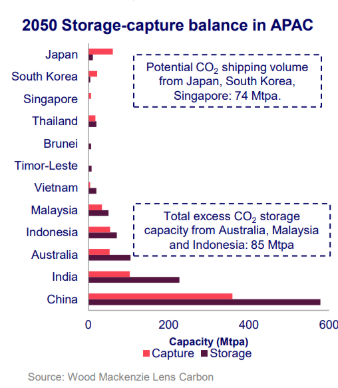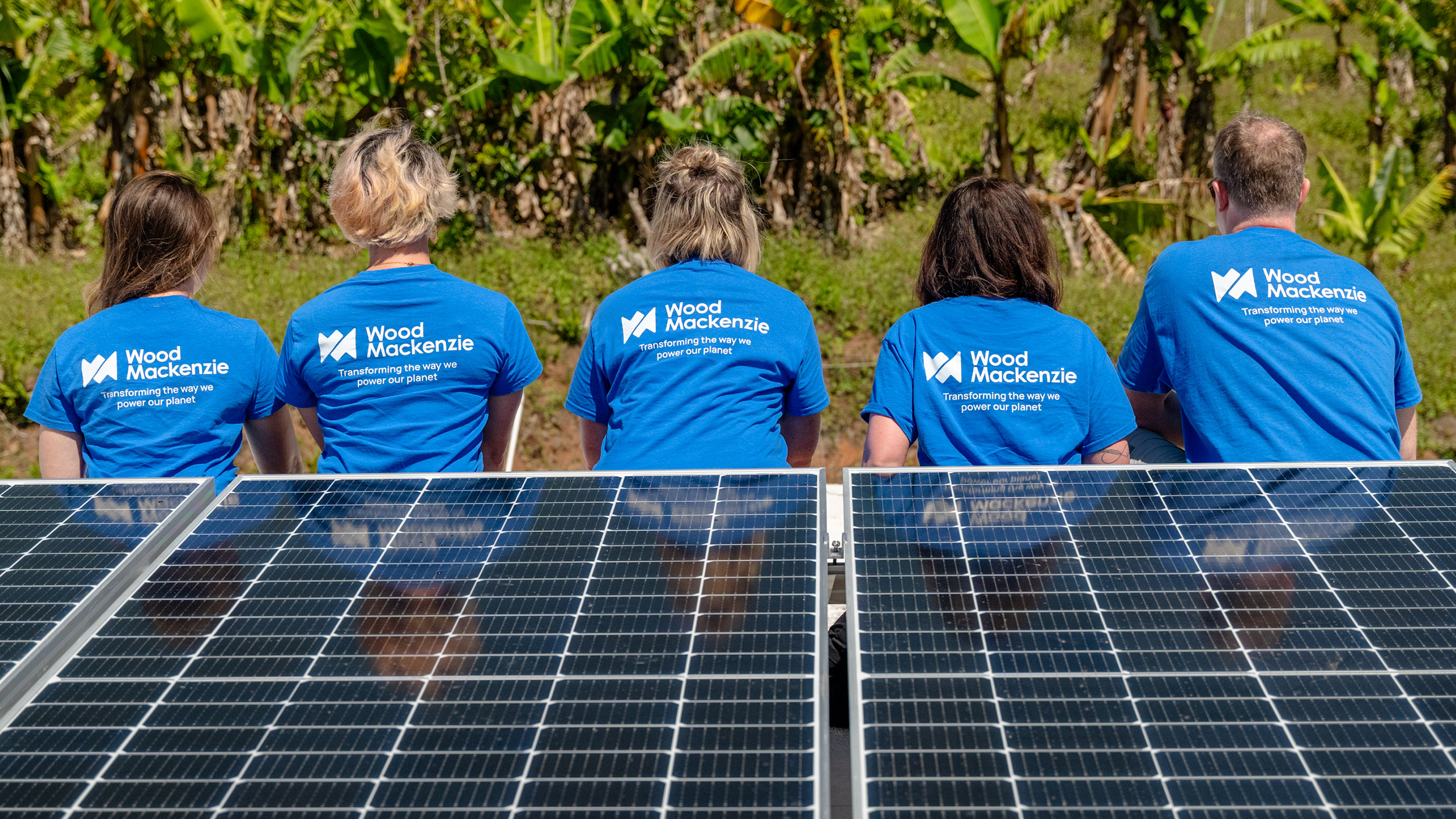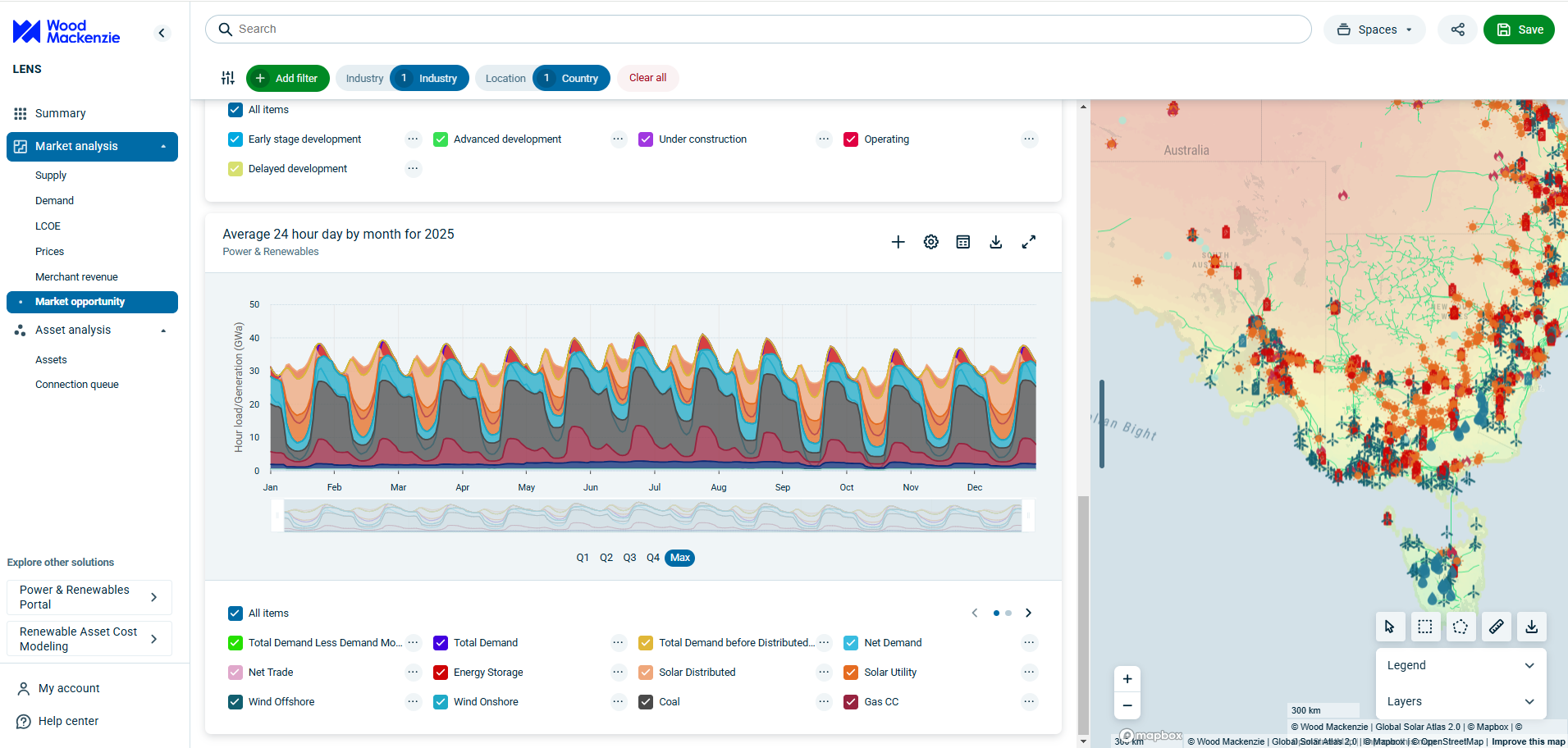Get in touch
-
Mark Thomtonmark.thomton@woodmac.com
+1 630 881 6885 -
Hla Myat Monhla.myatmon@woodmac.com
+65 8533 8860 -
Chris Bobachris.boba@woodmac.com
+44 7408 841129 -
Angélica Juárezangelica.juarez@woodmac.com
+5256 4171 1980 -
BIG PartnershipWoodMac@BigPartnership.co.uk
UK-based PR agency
Asia Pacific carbon capture and storage investment set to reach US$622 billion by 2050
Japan positioned to drive cross-border CCS initiatives
2 minute read
The carbon capture and storage (CCS) industry in Asia Pacific is on the path for significant expansion, with cumulative investment across capture, transport and storage projected to reach US$622 billion by 2050, according to Wood Mackenzie.
Japan is expected to emerge as a regional leader in cross-border CCS, with the third-largest CO₂ capture capacity in Asia Pacific by mid-century. This leadership position is projected to drive cross-border CO₂ storage demand to 74 million tonnes per annum (Mtpa), with Japan accounting for nearly 68% of that volume.
“Japan’s proactive approach to cross-border CCS will serve as a catalyst for regional CCS development,” said Stephanie Chiang, senior analyst, CCUS, at Wood Mackenzie, during Japan Energy Summit and Exhibition 2025. “By investing early in transport and storage infrastructure, Japan is laying the foundation for a robust CCS ecosystem across Asia Pacific.”

Japan’s progress is underpinned by a wave of policy and regulatory initiatives. In 2024, the Japanese government selected nine CCS projects for funding to support basic engineering studies on full CCS value chain and CO₂ storage assessments.
On the regulatory front, Japan has implemented the Act on Carbon Dioxide Storage Business, establishing a legal framework for CO₂ transport and storage. The country’s acceptance of the 2009 amendment to Article 6 of the London Protocol further enables cross-border CO₂ transport and storage activities.
As a result, Japan has climbed to second place in Wood Mackenzie’s CCUS Policy Readiness Index for Asia Pacific, which assesses countries on carbon pricing, regulations, targets, and incentives.
Despite these advances, Wood Mackenzie cautions that implementing cross-border CCS remains a highly complex undertaking. Chiang noted that success will require coordinated action among governments, industry stakeholders, and international partners. “While Japan’s progress is commendable, developing cross-border CCS hubs is not a linear process. It demands multi-party collaboration, well-defined regulatory alignment, and clarity around investment responsibilities and long-term liability,” Chiang said.
Key areas of focus will include the development of consistent emissions accounting methodologies that can be applied across jurisdictions, as well as frameworks to allocate liability and risk between CO₂ emitters, transport operators, and storage providers. Equally important is the establishment of clearly defined roles for each participant in the value chain, supported by operational guidelines and transparent governance structures. Without these foundational elements, cross-border CCS projects may face delays or fail to attract sufficient investment.
According to Wood Mackenzie’s analysis, transporting 74 Mtpa of CO₂ across borders by 2050 at an average tolling fee of US$50 per tonne could generate an estimated US$3.7 billion in annual revenue. As countries across Asia Pacific look to decarbonise hard-to-abate sectors, demand for CCS services is expected to grow, with Japan well-positioned to become a central node in this emerging network.
Looking ahead, the introduction of a regional carbon pricing framework could significantly enhance the commercial viability of CCS. By creating a stable and predictable price signal, such a mechanism would incentivise emitters to invest in decarbonisation and provide long-term revenue certainty for infrastructure developers. A coordinated approach to pricing would also help align national climate strategies and promote a more integrated regional carbon market.
“Despite the inherent complexity, the potential for cross-border CO₂ transport and storage hubs in Asia Pacific is both real and significant,” Chiang concluded. “Japan’s leadership in developing the necessary infrastructure and policy frameworks will be instrumental in unlocking this opportunity. In doing so, the country is not only advancing its own climate agenda but also contributing to a broader, region-wide effort to transition to a low-carbon economy.”





